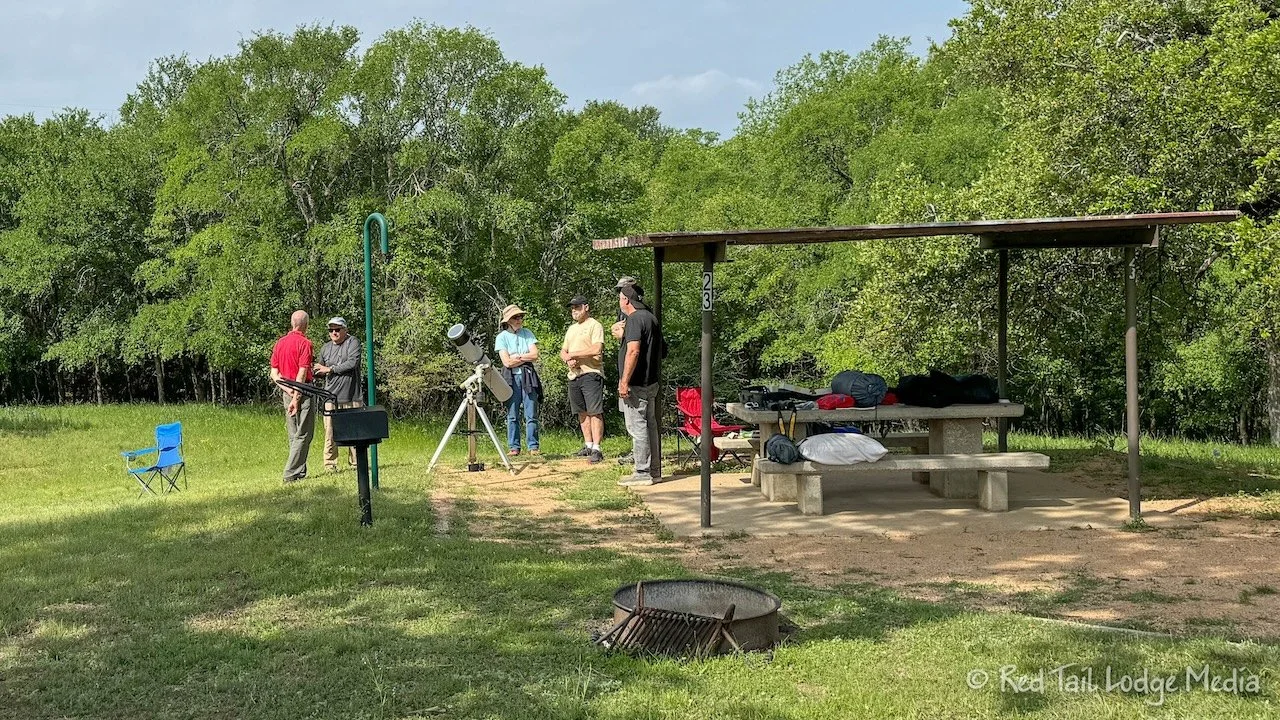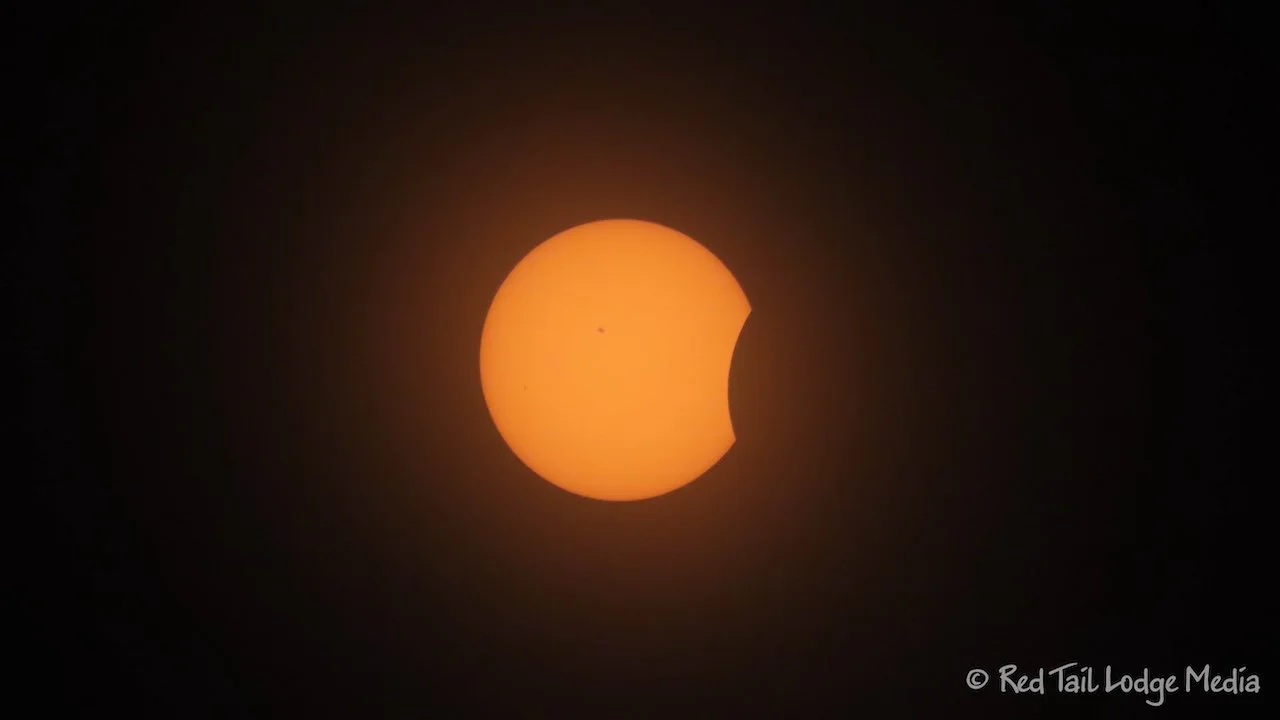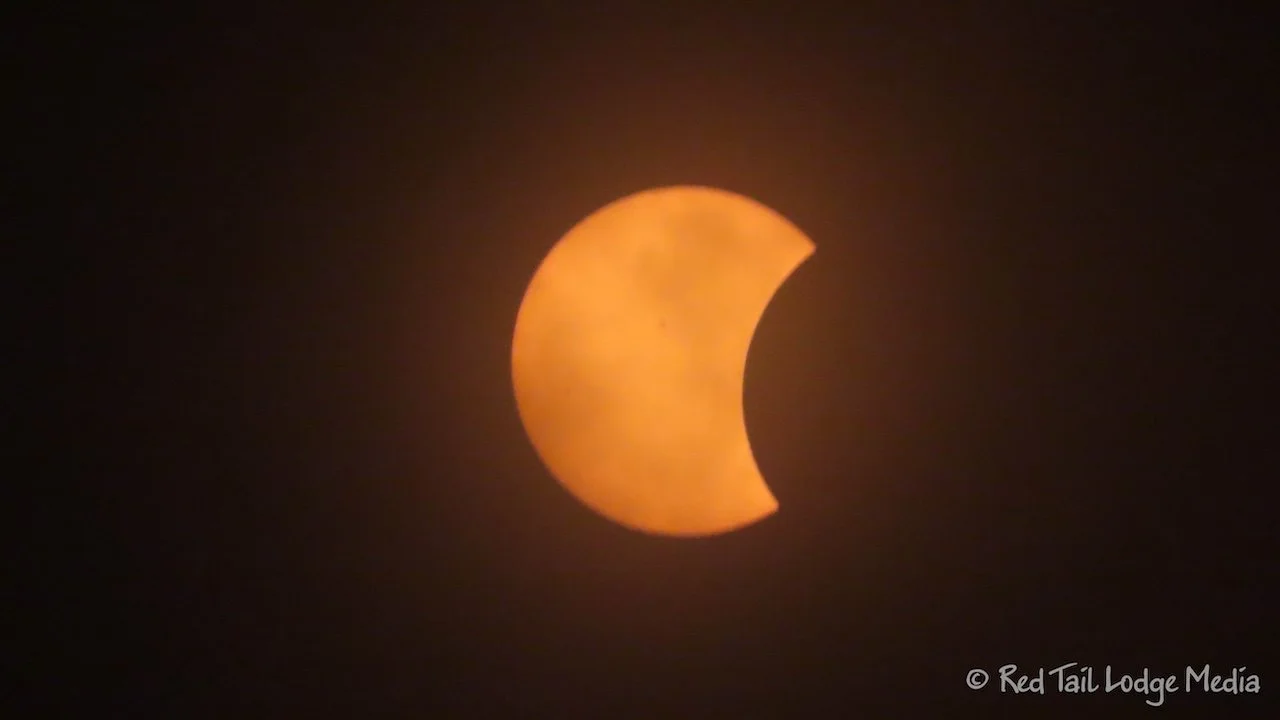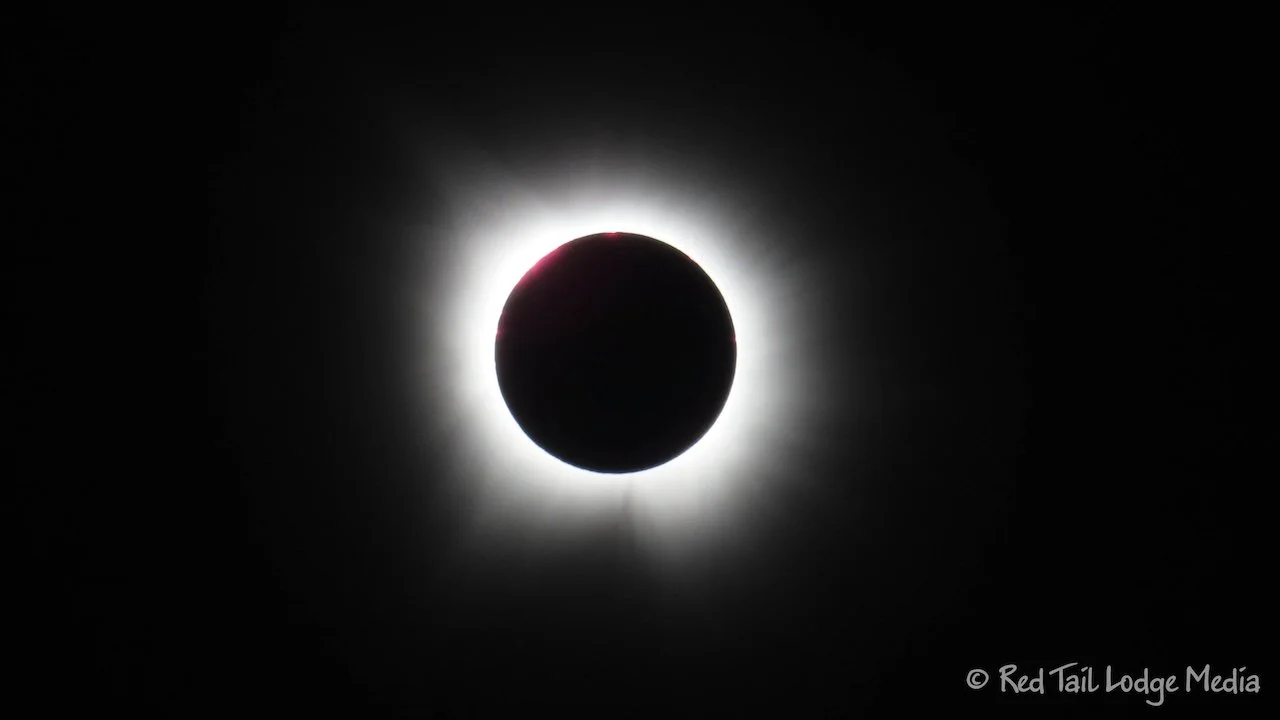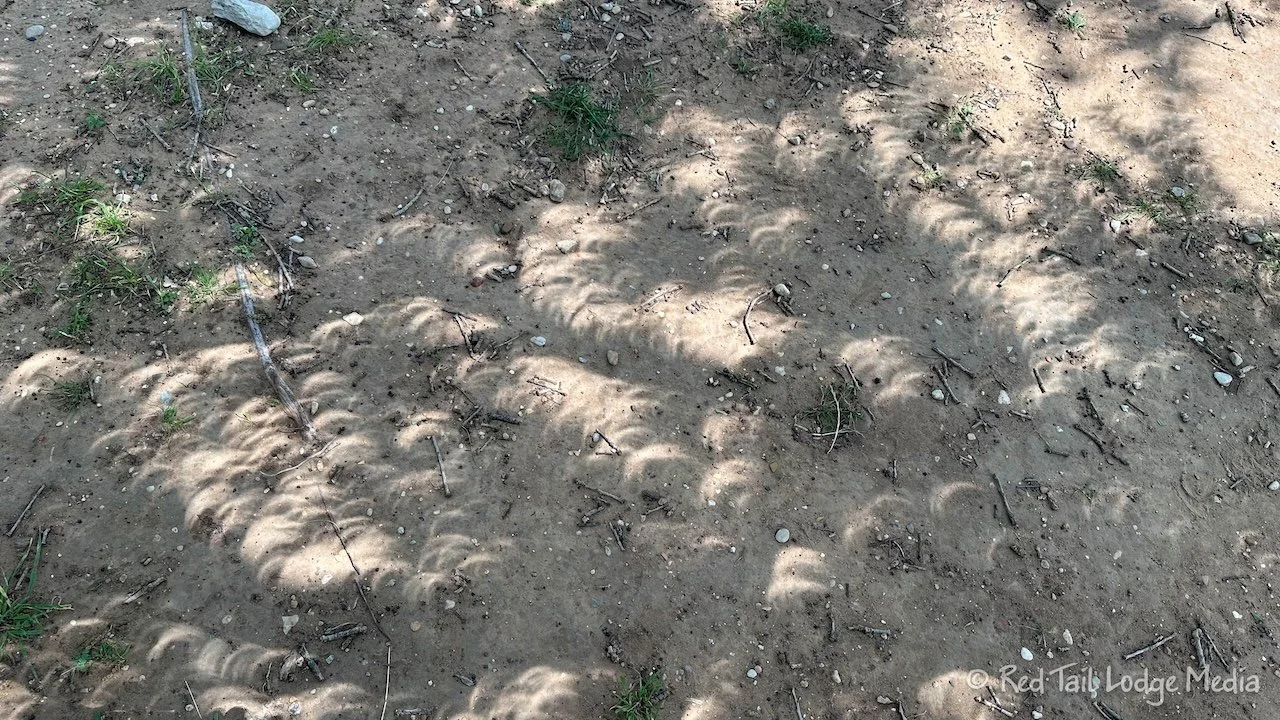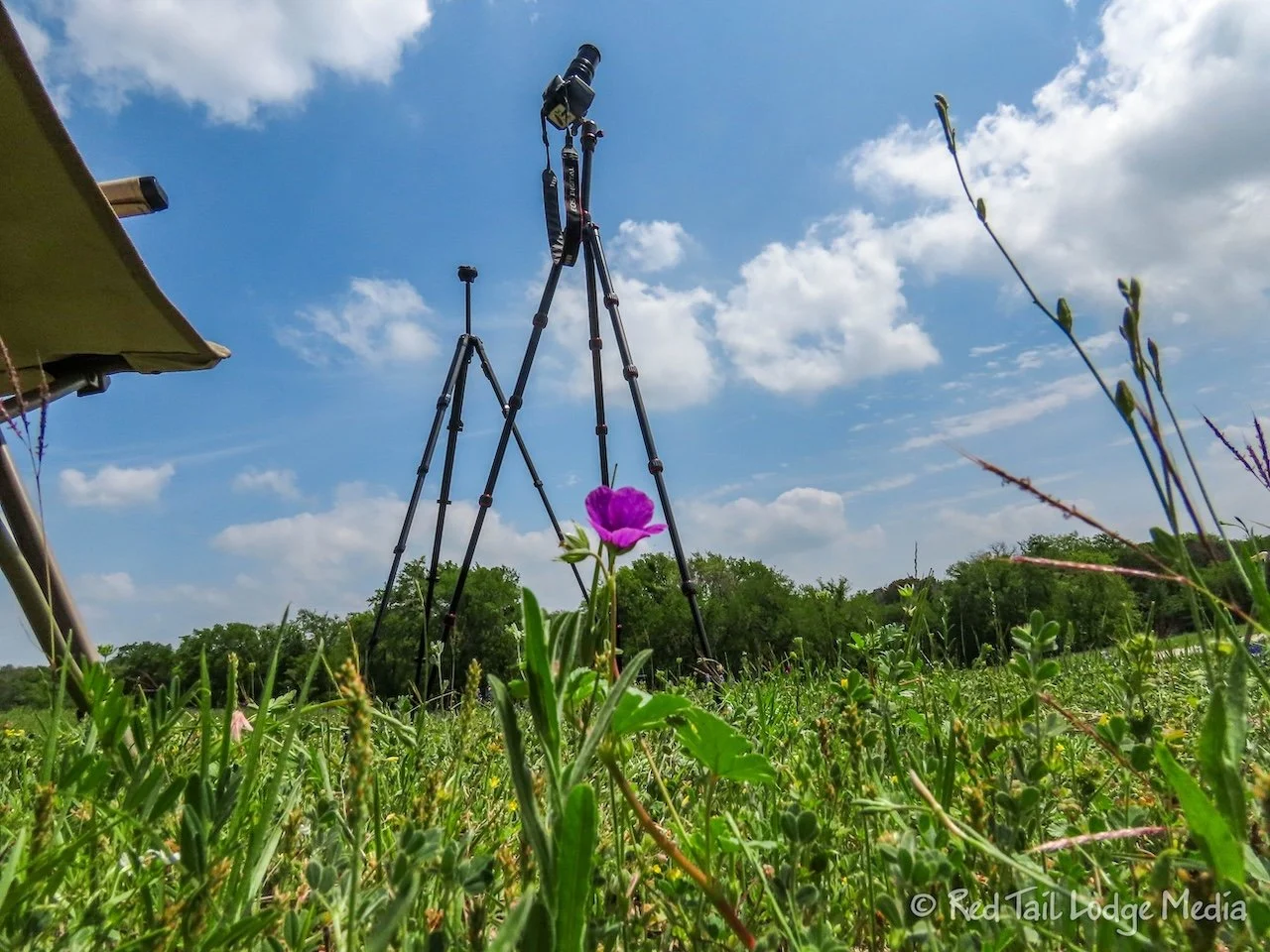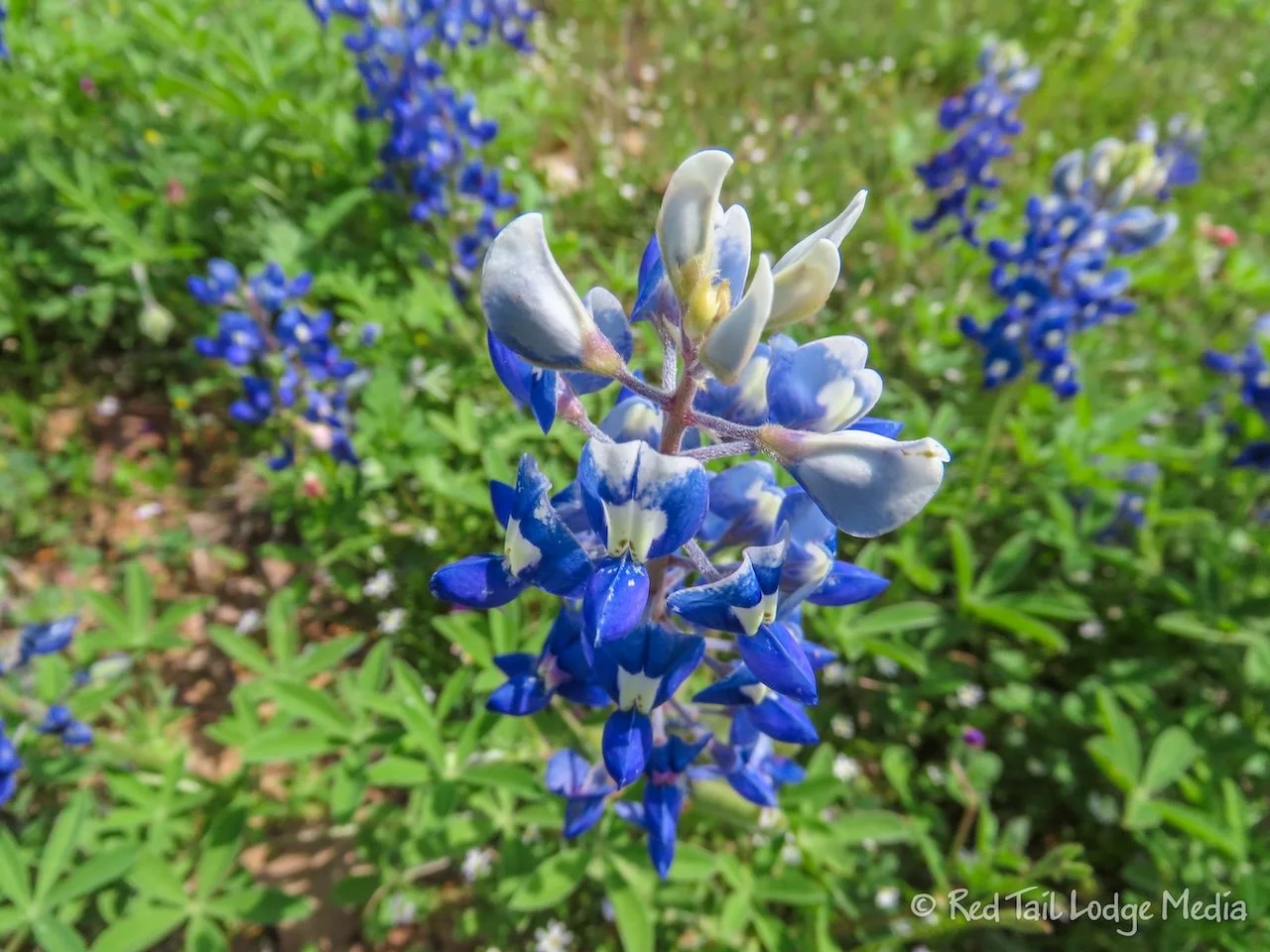Total Solar Eclipse, Lake Whitney, Texas - April 8th, 2024
For the Total Solar Eclipse, we took a one week trip to Texas to view it. We camped at Lofers Bend West Campground on Lake Whitney in Texas. This post covers the full day of the eclipse.
Monday was Total Solar Eclipse Day. In the morning, the skies were completely overcast, but we kept our fingers crossed that it would clear up in time for the eclipse. At 10 am, the sun was starting to poke through the clouds.
For exercise, we walked all the roads in the campground. We covered over three miles. Many people in the campground were setting up their tripods and scopes, preparing for the eclipse. The campground was pretty full, but not completely. It was supposed to be fully booked, but about 5% of the sites remained empty. We’re guessing some people cancelled their plans when they saw the weather forecast.
After enjoying a leisurely lunch at our camp site, Ann started setting up her tripods. She set up the GoPro (paid link) to record a video of the totality, with a back drop of bluebonnets. One tripod held her Canon EOS Rebel camera equipped with a solar filter on her EF-S 55-250mm IS II lens. The other tripod was for her Canon Powershot (paid link). The Powershot doesn’t have threads to mount a normal camera filter on it, so she bought a universal solar filter (paid link). In addition, we had our eclipse glasses handy.
Luckily, the clouds parted for the eclipse. Yay! There were a handful of times when a cloud passed in front of the sun during the eclipse, but we had a clear view the rest of the time. The eclipse started at about 12:20 pm, lasting all the way to about 3 pm. The totality was over four minutes long, around 1:40 pm.
Ann tried to take pictures of the eclipse every five minutes, when the clouds weren’t in the way. Before shooting with the Rebel, Ann would reposition the camera to make sure the sun was centered in the shot. She started out trying to manually focus it, but then let the camera autofocus after that. Everything was on automatic, the focus, the aperture, and the shutter speed. She let the camera do the work. She used a two second timer to make sure pressing the shutter didn’t affect the shot.
When a cloud got in the way, the solar filter was so strong that you couldn’t see anything but black. It was also hard to tell if the sun was centered in the frame, since everything else was black. Ann could see if one of the focus points was over the sun, but there is more than one focus point. Then she realized that the center focus point had a faint circle around it, so she had an easier time after that.
Ann gave up using the tripod for her Powershot. It was much easier to just hand hold the shot. The universal solar filter was too big to strap onto the Powershot, so she ended up cutting off most of it and just holding the filter in front of the lens by hand. The Powershot has a much stronger zoom than the lens on her Rebel, so she felt the pictures from the Powershot turned out better than the Rebel, even being handheld. Again, she let the Powershot do the work, using everything automatic.
She did use the tripod with her Powershot a couple of times to take a video, as she thought the movement of the clouds passing by made some interesting movement.
During the four minutes or so of totality, a filter wasn’t needed. All of the totality shots were taken with the Powershot, since she didn’t want to bother removing the filter from the Rebel.
During totality, you could also look at the sun without eclipse glasses. It was amazing to see it with your bare eyes and you could see the light flaring out around the moon pretty well. We also looked around us, taking in the darkness. It wasn’t pitch black, but it did seem like it was night time. We didn’t notice any unusual wildlife behavior, but there weren’t many animals near us.
Just like we noticed at the Annular Solar Eclipse in Albuquerque last fall (Albuquerque, New Mexico - October 9th to 14th, 2023), we found some eclipse shadows on the ground. The leaves of some trees and bushes can act like pinhole viewers, creating the eclipse images in the shadows. We’re not sure what types of leaves cause a better effect, because only one of the trees near our camp site created the images on the ground and they didn’t seem to last the whole eclipse.
We are so thankful that the weather cooperated for us to witness the eclipse. Ann recalls seeing a partial eclipse in 1979 in Ohio. She remembers creating a pinhole viewer out of a shoebox, because she didn’t have eclipse glasses back then. She doesn’t remember much more than that. Just seeing a shadow in a box is not as impressive as seeing it with glasses, or through a powerful zoom lens or telescope. During the 2017 total eclipse, we stayed in Colorado, so we were not in the path of totality. That time we did have eclipse glasses and we took a break at work to walk outside and view the eclipse. So this was the first time either of us has witnessed a total eclipse. We probably won’t get another chance for the rest of our lifetimes.
Starting in the late afternoon, we could hear thunder rumbling in the distance. However, the storms stayed to the south of us for a while. We even cooked dinner outside on the Blackstone griddle (paid link). But then, around 7 pm, the sky let loose. It poured down rain for hours. That’s OK. It can rain now.
We heard of many people who tried to chase the good weather for eclipse viewing. We know others in the same area that we were, who were not able to witness the eclipse due to cloud cover. We’re glad we stayed put and took our chances. Even if that meant we would have to settle for just seeing the bluebonnets and miss the eclipse. But we are very glad that Mother Nature cooperated for us and allowed us to see the total eclipse.
Check out our related video: Total Solar Eclipse, Lake Whitney, Texas
(Ann)



